Reclaimed wood can be recovered from a wide variety of sources, but it most frequently comes from timber framing and decking used in old barns, factories, and warehouses. Some tell-tale signs of reclaimed wood include nail holes, manufacturer stamps, and markings. Other unique qualities, like variation and depth of color or unusual patterning, can be a result of it being stored in vessels like wine barrels, beer casks, and other containers.
Additionally, reclaimed timber is usually cut from strong, mature trees (unlike the younger, weaker trees used today for lumber), and is less prone to splitting. Because of these aspects, many designers choose to use reclaimed wood rather than virgin timber in their projects.
Ceiling turned to walls
Salvaged wood from multiple origins come together in this project in Buenos Aires by architects Teresa Sarmiento and Nicolas Tovo. They designed the home for their own family with the intention of celebrating recycled materials-floor boards of repurposed Brazilian pine and wall boards from the ceiling of a tenement in a local Buenos Aires neighborhood. The boards were cut down to size and oriented vertically to bring the eye upward to a clerestory window and small white beams.
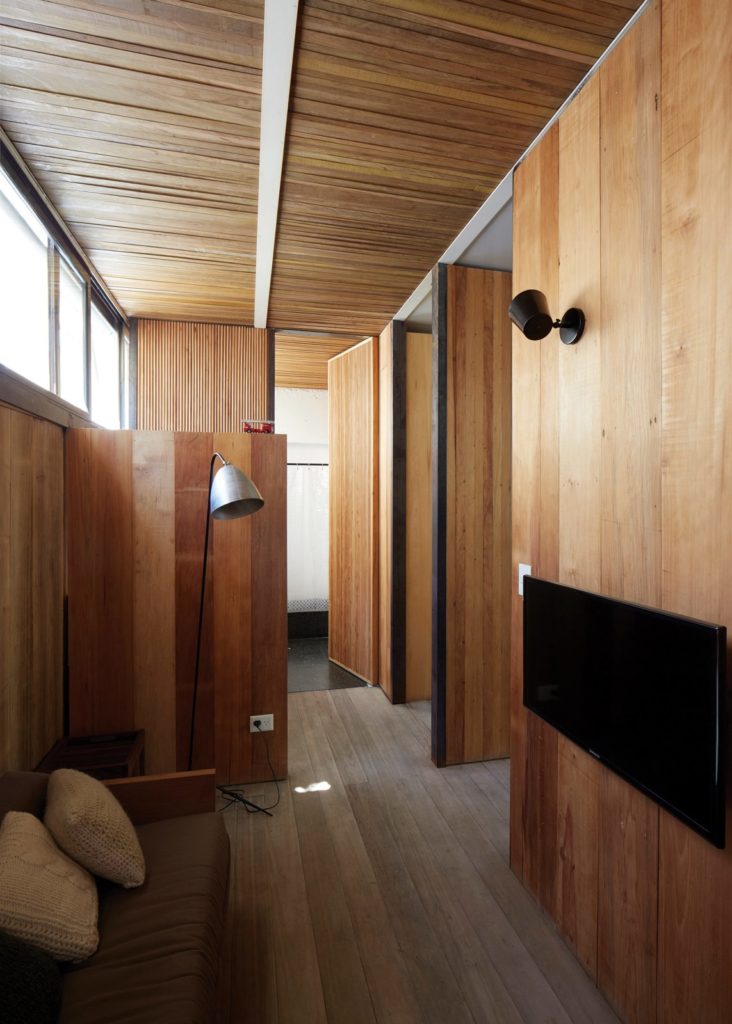
Repurposed staircase
A small, efficient home in Seattle designed by SHED Architecture & Design incorporated wood on the exterior and interior of the home, and even used salvaged wood from the residence that had previously stood on the site. Although the 100-year-old bungalow was demolished, the treads of one of its staircases were repurposed in the new home as a modern, open-riser stair that lets in light from the windows beyond.
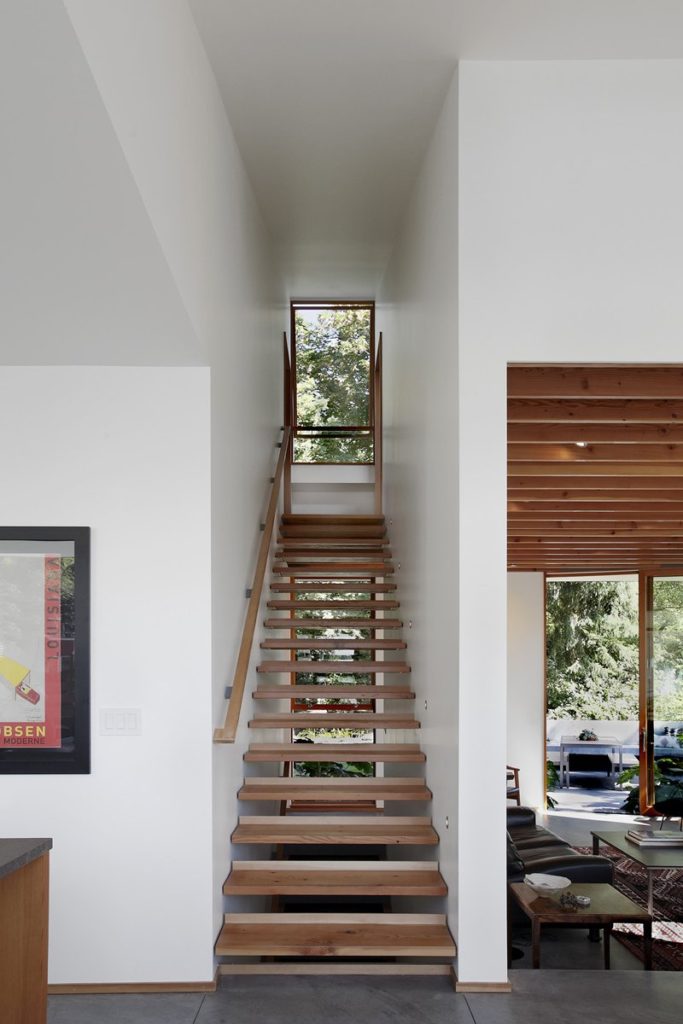
Entryway elegance
Even a few pieces of salvaged lumber can have a big impact. This entryway in a Brooklyn townhouse, renovated by Bangia Agostinho Architecture, reused hemlock fir joists from the existing building structure as casework around the main entry door. The trim has a simple, modern profile, ensuring that it makes a contemporary statement. In the entryway is another repurposed piece of wood that was charred in a fire more than 100 years ago. It has since been painted and repainted - creating a unique patina and texture - and transformed into a bench.
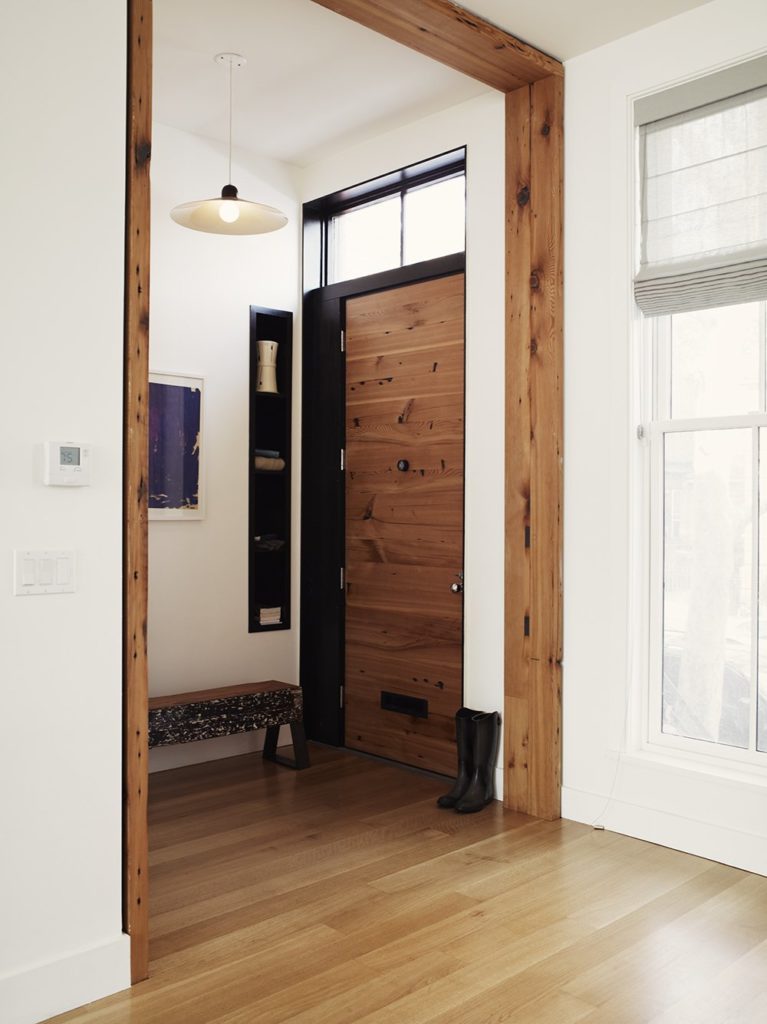
Accent wall and headboard
In a project in Quebec, Canada, a 1924 building was renovated by Bourgeois Lechasseur Architects. The renovation sought to modernize the apartment while preserving the historical elements - in particular, reusing wooden boards that were salvaged during demolition. The unfinished boards act as a rustic, earthy accent wall and headboard, while the surrounding white walls and crisp bed linens keep the room contemporary.
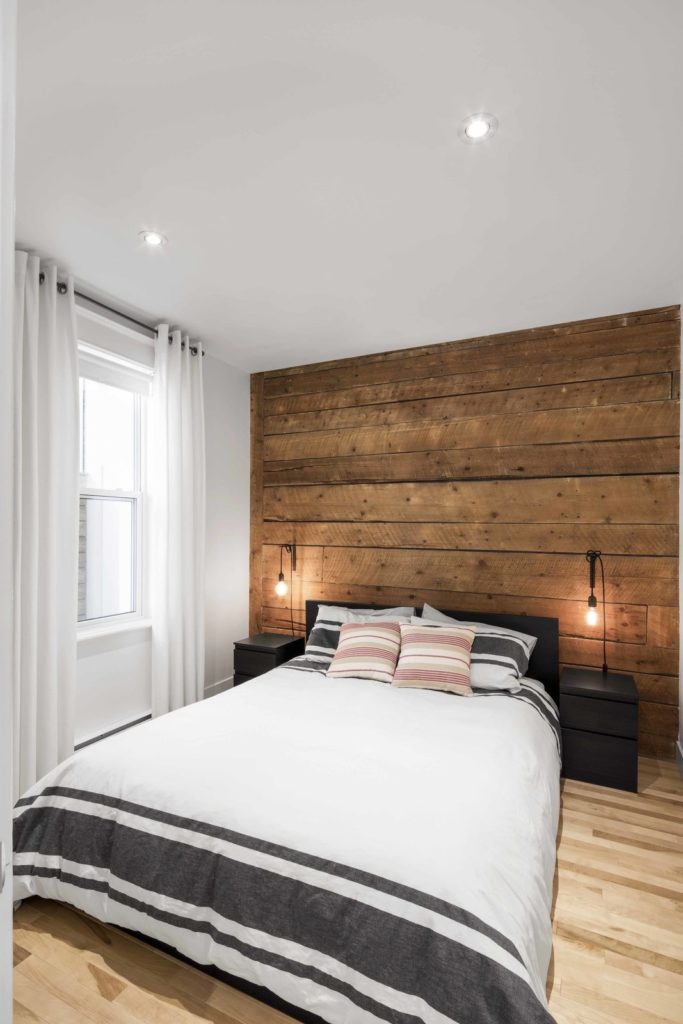
From flooring to doors
This loft in Brooklyn, New York, used almost all reclaimed, recycled, or diseased wood for everything from the flooring - salvaged from a barn constructed in the 1800s in the Allegheny Mountains in Ohio - to the doors, which were saved from a mansion in Greenwich, Connecticut. Shelving, walls, and ceilings throughout the apartment are covered with wood that came from butternut trees in a blighted forest in Vermont, where worm infestations created intricate, unique patterns in the diseased wood. Although the apartment is located in New York, the different pieces of lumber inside come from all over the country.
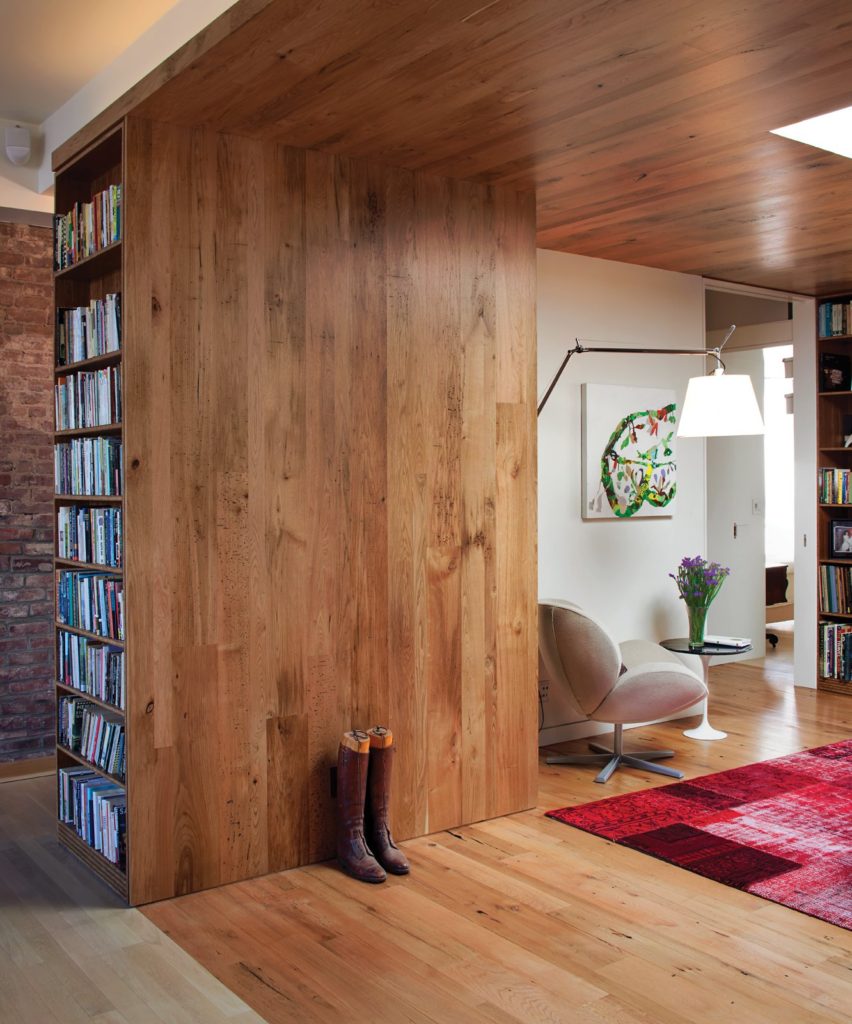
Structural elements and beyond
Different types of reclaimed wood, each from different sources, steal the show in this residence in the Scottish countryside by Glasgow-based architect Andrew McAvoy of Assembly Architecture. Thick, deep oak beams were reclaimed and reused for structural elements, while the maple flooring was salvaged from an old school in the nearby rural village of Aberdeen. The reclaimed wood was a critical contributor to the goal of sustainability in the home.
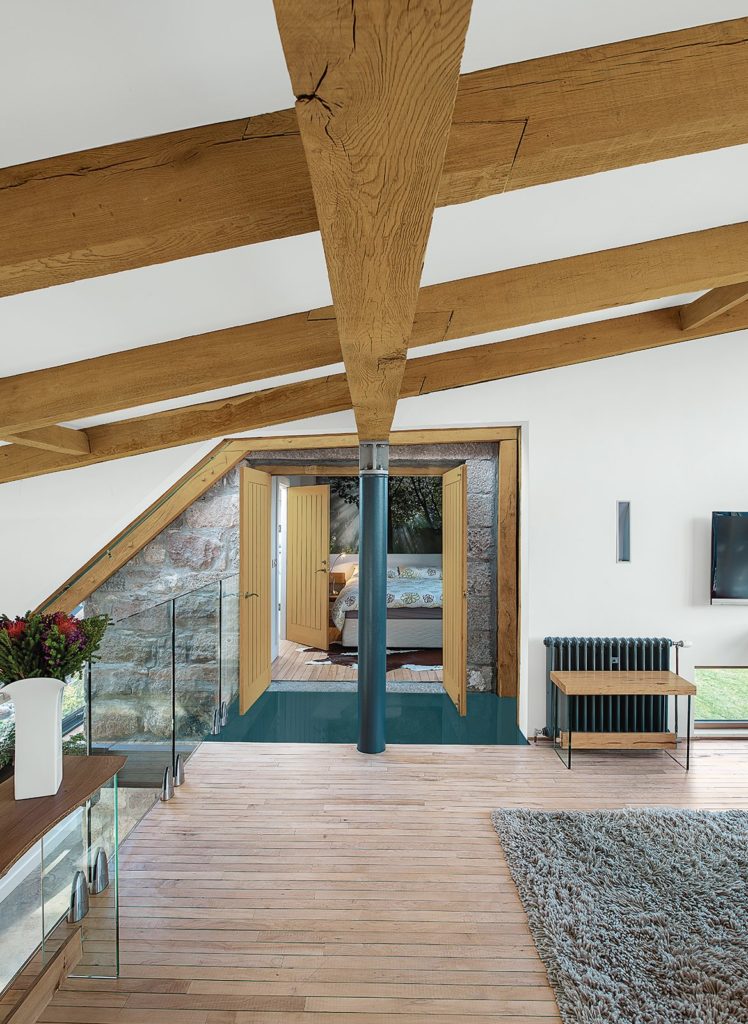
Posts and beams
As barns become obsolete, they become fruitful sources of salvaged wood, like this house in the Catskills in Bovina, New York. Architect Kimberly Peck designed a home for a Norwegian couple that was looking for the perfect mix of warm, Scandinavian design and mid-century modern. The wood boards on the walls and the posts and beams are all reclaimed, but from different sources. The structural elements were recycled from a barn built in 1840, and the reclaimed planks on the walls were stained with a gray wash to match the other wood.
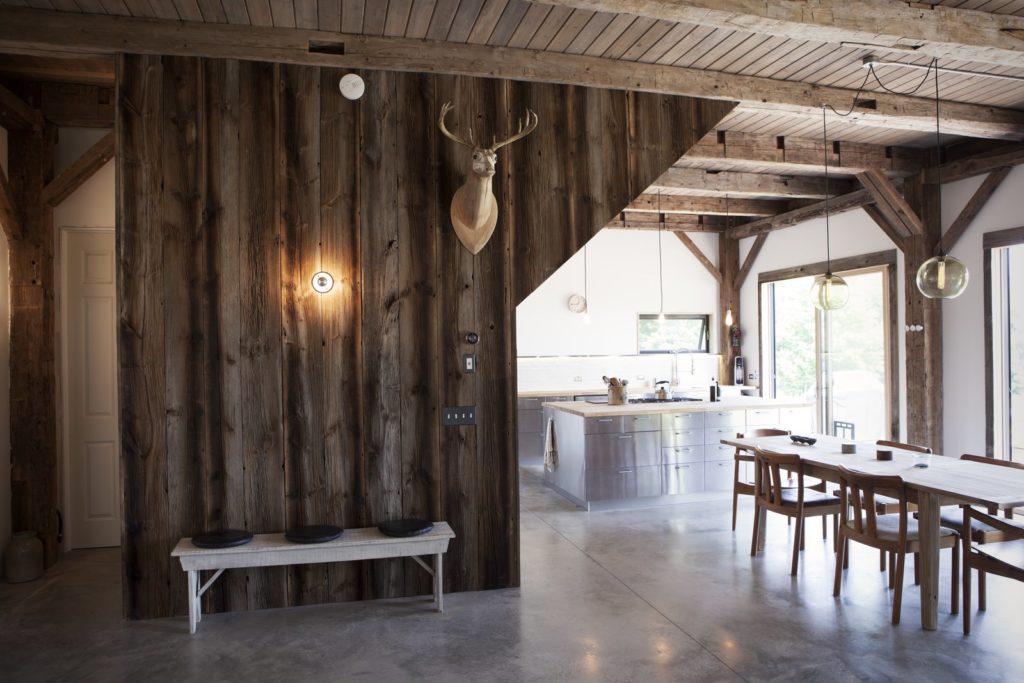
A fine library
High ceilings and natural light prevent this small library that’s clad in reclaimed wood from feeling overwhelming or oppressive. The wood, a salvaged spotted gum, is a durable wood that’s native to Australia and is often used in structural, exterior, and interior applications. It ranges from a deep, reddish tone to a much lighter, almost yellow-white color. The library was part of a renovation of a family residence by Melbourne-based architects Andrew Maynard and Mark Austin of Andrew Maynard Architects.
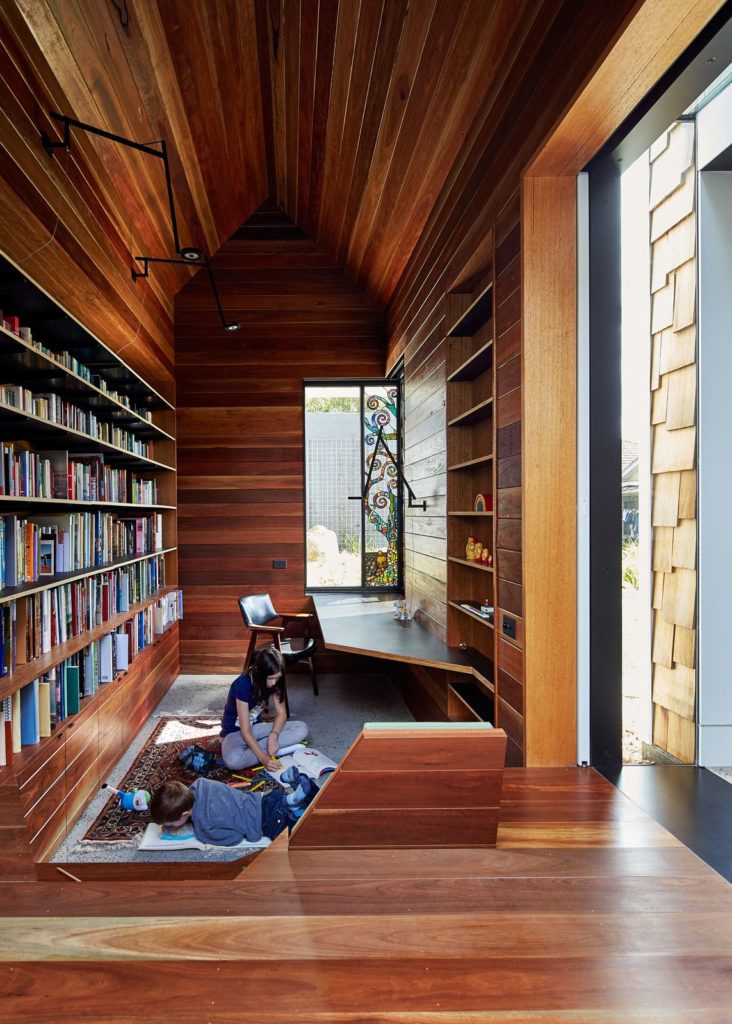
This article was written by Kate Reggev and originally appeared on Dwell. Check out more of their content on Dwell.com.